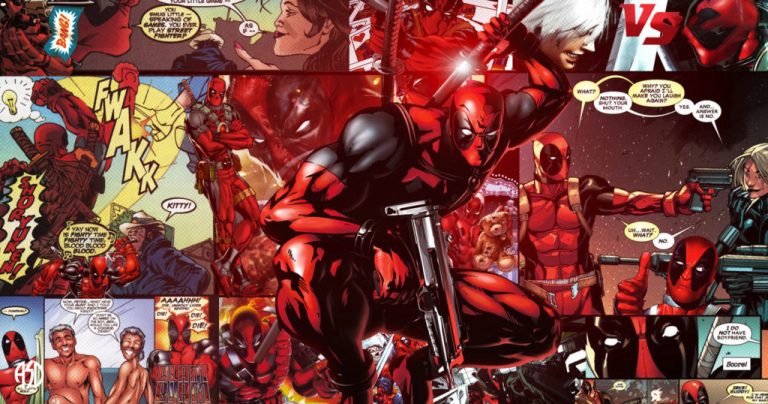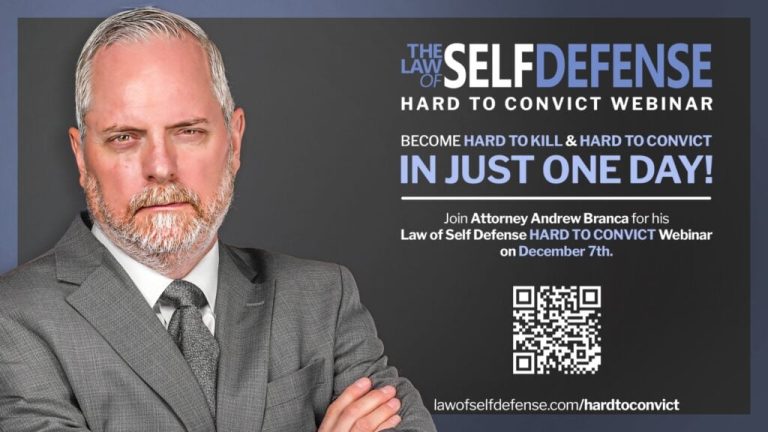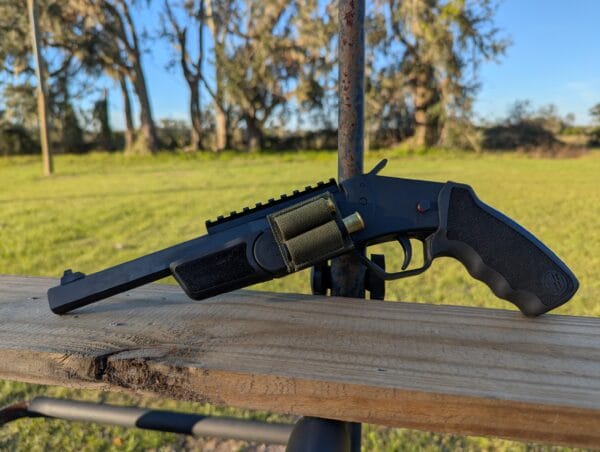Welcome to our show today in which we mostly cover Alec Baldwin’s rather damning interview with sheriff’s deputies, the investigators on this matter of Baldwin’s shooting dead of cinematographer Halyna Hutchins, immediately after the shooting.
A few preparatory remarks before I get into the meat of this.
Columbo Isn’t the Dummy He Makes Himself Out to Be!
First of all, for those of you of a certain age, you may remember the old TV show, “Columbo”. Colombo was kind of a bumbling detective who was always investigating, typically, murders that were committed by nominally very smart, wealthy individuals. Columbo’s kind of poorly dressed, didn’t come across as extremely bright. And these wealthy smart killers were invariably caught, tripped up by Columbo, who despite his appearance was very clever indeed. And often they were trapped because the wealthy killers the “smart” killers would trap themselves because of their hubris, their pride, their ego, they just presumed they were smarter than everybody else.
And I definitely get that vibe from Alec Baldwin in this video. Here he is a multimillionaire movie star, famous the globe over. And he’s dealing with two podunk, I’m sure in his view, podunk sheriff’s deputies investigating the shooting. And they’re both women. And Alec Baldwin strikes me as the kind of guy who believes that women just throw themselves at him, and perhaps they do.
But it strikes me as in the course of this interview, he’s believing that he kind of inherently has an upper hand over these two female sheriff’s deputies.
And he just starts talking with them. And unfortunately, there’s a lot of substance in his recorded interview with them that is entirely consistent with reckless homicide, with involuntary manslaughter under New Mexico law. He’s not doing himself any favors, although I expect he thinks he is.
And largely it’s because frankly, he’s making himself easy to convict. He’s legally, literally ignorant of where the legal boundaries are for involuntary manslaughter. He doesn’t realize he’s saying things that are incriminating, that certainly could and would be used against them in a court of law, if we had a justice system that wanted to go after him. That’s a separate, largely political question.
If You’re Being Mirandized, Shut Your Dirty Little Mouth
And the second matter here is at the very beginning of this interview with police, they Mirandize him, they read him his rights, and they have them sign that Miranda waiver, written documents basically saying, I’ve been read my rights, I understand my rights, I’m waiving them, I’m agreeing to talk to these investigators.
I’m gonna play that little video clip of the few seconds of that start of that interview, you can see that Miranda waiver process occurring and the way that detectives kind of wave it off, when Alec Baldwin asked questions about, you know, should you be concerned about being charged?
Okay, did you hear that little chime at the end? That chime at the end should have been his lawyer fairy punching Alec Baldwin in the face until he asserted his right to silence and his right to counsel.
Folks, if you’re being Mirandized it’s because the police want to question you as a potential suspect in a crime. This is just the process we have to go through, the detective says, just waving it off. It’s just our procedure. Yeah, it’s an investigatory procedure that could result in you spending much of the rest of your life in prison.
This is no joke. They are Mirandizing you for a reason. And especially if they Mirandize you in a police interview room, with the one-way mirror right there. I mean, what do you think they’re doing? You’d have to be an idiot or an egomaniac to think that this is going to work out well for you, talking to these detectives.
By the way, maybe Alec Baldwin thinks they’re podunk, but they are trained detectives in the sheriff’s department in Santa Fe County, New Mexico, and this is not their first interview with a criminal suspect. You have to be crazy to think this is going to work out well for you to speak with them without legal counsel present, or I guess an egomaniac, and perhaps that’s what’s really going on here.
Completely independent of the merits of whatever legal analysis we may do here with respect to Alec Baldwin, folks, if you’re being Mirandized, shut your mouth. That’s not the time to talk to the police until at least you have a lawyer present, your lawyer present, a competent lawyer present. So, word to the wise there, folks,
OK, let’s move on.
Alec Baldwin’s Damning Police Interview
The legal case against actor Alec Baldwin for the apparent involuntary manslaughter of cinematographer Halyna Hutchins continues to strengthen—indeed, it’s now buttressed by Alec Baldwin’s own statements to investigators in an interview that took place immediately after the shooting, even before he was apparently aware that he’d apparently recklessly killed the 42-year-old wife and mother.
The New Mexico Santa Fe County Sheriff’s Office recently released additional video relevant to the shooting death of Hutchins at the hands of Baldwin. Most relevant for our purposes here is the video of the interview conducted of Baldwin by two female deputies in the hours immediately following the shooting.
The reason: Alec Baldwin’s own statements are consistent with his conduct in shooting of Hutchins as being criminally reckless, and thus meeting the conditions for conviction under New Mexico’s involuntary manslaughter statute.
New Mexico Involuntary Manslaughter Statute: § 30-2-3. Manslaughter.
The relevant New Mexico statute on involuntary manslaughter is § 30-2-3. Manslaughter, which addresses both voluntary and involuntary manslaughter. Our focus here, of course, is on involuntary manslaughter.
In the context of involuntary manslaughter, § 30-2-3 reads in relevant part:
Manslaughter is the unlawful killing of a human being without malice. … B. Involuntary manslaughter consists of manslaughter committed in the … commission of a lawful act that might produce death … without due caution and circumspection.
Ms. Hutchins is obviously killed. We have stipulated that the killing of Ms. Hutchins was not justified (e.g., it was “unlawful”) and without malice (without intent to cause harm), so that meets the conditions of the first sentence of the manslaughter statute, and satisfies the definition of manslaughter under New Mexico law.
The possibility of voluntary manslaughter appears to be off the table here, given the lack of evidence of a “sudden quarrel” or “heat of passion” required for that crime by § 30-2-3. So that leaves us to consider the possibility of involuntary manslaughter.
The key, then, is to determine whether Baldwin’s pointing of the gun at Ms. Hutchins without first ensuring that the gun did not contain live ammo, was the commission of a lawful act that might produce death and that was done “without due caution and circumspection.”
Inherently Dangerous Instruments: Yep, Including Guns
That means we have to understand what “due caution and circumspection” means—and particularly in the context of an inherently dangerous instrument, such as a firearm.
It is common knowledge that firearms are dangerous instruments, so the law presumes that we all possess such knowledge. In the case of Baldwin, he actually sits on the board of a gun-control organization whose existence is premised on the fact that guns are dangerous, so he can certainly be presumed to possess this knowledge.
Items are inherently dangerous when they can readily cause death or serious bodily injury to people if used carelessly. Guns clearly qualify, as already noted. Also in this category of inherently dangerous instruments would be explosives, heavy equipment, and dangerous drugs or chemicals. Use of these items takes particular and specialized care if death or serious bodily injury is to be avoided.
It happens that inherently dangerous instruments are often exceptionally useful. Guns, for example, are exceptionally useful, compared to the available alternatives, for purposes of defense and hunting. Explosives are exceptionally useful for mining and road construction and demolition. Dangerous drugs are exceptionally useful for human health and dangerous chemicals for various industries.
Balancing Inherent Danger with Social Utility: Strict Liability
So, society wants to realize the value of these various inherently dangerous instruments—but also wants to balance that value against the considerable risk of harm these inherently dangerous instruments might cause.
That balance is achieved by imposing the following rule—anyone making use of an inherently dangerous instrument is strictly liable for any unnecessary harm that they cause, no excuses, period. The burden is placed on the person using the inherently dangerous instrument to ensure that they take whatever steps are required in order to not cause unnecessary harm—and if they do cause unnecessary harm, they bear absolute responsibility for that harm, no excuses.
What this all boils down to is that for any category of inherently dangerous instrument there will have been rules developed for the safe use of that instrument—follow the rules, and the value of the instrument can be realized without much risk of serious harm. Fail to follow the rules, and serious harm becomes quite likely—and, again, the user then bears absolute responsibility for having caused that harm, no excuses. (If safe use of an inherently dangerous instrument would not be possible even if safety rules were followed, that instrument would simply be prohibited from general use.)
Four Rules of Gun Safety, or “Due caution and circumspection”
What this means in the context of firearms, a particular class of inherently dangerous instruments with a considerable potential for causing unnecessary death and serious harm to others, is that there exists a series of safety rules for their responsible operation. These rules are well established and widely recognized—and there are only four of them.
Phrased in the context most relevant to the facts of this case, the four rules for safe gun handling are:
- All guns are presumed to be loaded until the gun handler personally verifies otherwise—and that verification becomes invalid the moment the gun leaves the handler’s control.
- Never point the muzzle of a firearm at anything you are not willing to kill or destroy.
- Never press the trigger of a firearm unless you intend for it to fire a bullet from the barrel.
- Know your target, and what is beyond your target.
That last safety rule is intended to recognize the dangers presented by bullets that can penetrate objects and proceed onward to strike unintended people and things, as well as to help prevent hunters from shooting each other because of mistaken identification as game, so that one isn’t particularly relevant to our analysis here.
The first three safety rules, however, are intensely relevant to the facts of this case. As the safety rules for safe gun handling, they define what is meant by the statutory element of “due caution and circumspection” in the context of handling firearms.
The Beautiful Redundancy of Gun Safety Rules
One interesting facet of the gun safety rules is that they are redundant, in the technical sense of meaning that violating any single one of them will not necessarily have a bad outcome. Indeed, a bad outcome in the sense of death or serious bodily injury can really only happen not if one of those three safety rules is violated, or even two of them, but instead requires that the gun handler manage to violate all three of those gun handling safety rules.
Merely mistakenly believe a gun does not contain live ammo (e.g., in fact, it is loaded), but neither point it at anyone nor press the trigger, and no harm results.
Merely point the muzzle at someone, but first ensure the gun does not contain live ammo and do not depress the trigger, and no harm results.
Merely press the trigger, but first ensure the gun does not contain live ammo and don’t point the muzzle at anyone, and no harm results.
Break all three of the safety rules, however—mistakenly believe your gun containing live ammo is unloaded, point the muzzle at another person, and press the trigger—and you have a very bad outcome, indeed.
That’s precisely why the safety rules exist—so when handling an inherently dangerous instrument in the form of a gun, bad outcomes—death and serious bodily injury—can be avoided.
So how does one handle a firearm “with due caution and circumspection”? By adhering to those safety rules when handling the firearm.
When is a person handling a firearm failing to do so “with due caution and circumspection”? When they are handling that firearm in a manner that violates one or more of those safety rules.
Based on the apparent facts of this case, it appears incontestable that Alec Baldwin violated at least two, and arguably all three, of those primary gun handling safety rules when he engaged in the conduct that killed Ms. Hutchins.
- First, he pointed the muzzle in her direction—presumably directly at her, as she was obviously struck by the bullet fired out of that muzzle.
- Second, he failed to first ensure that the weapon did not contain a live round.
- The result: the unintended discharge of the bullet into Ms. Hutchins, killing her.
That, in a nutshell, certainly appears to be the “commission of a lawful act which might produce death … without due caution and circumspection.”
And that, as we’ve already seen, is the statutory definition of involuntary manslaughter under § 30-2-3.
Incidentally, this conclusion does not require that Alec Baldwin intentionally depressed the trigger of the pistol and induced the weapon to fire—conduct which would violate the third primary gun handling safety rule. Merely pointing a loaded firearm at someone creates a risk of death, regardless of whether the trigger is depressed—that’s why there is a specific and separate safety rule for pointing of a firearm, on the one hand, and pressing of the trigger, on the other.
In any case, however, there seems good reason to infer that Baldwin did, in fact, depress the trigger at the moment the gun fired and mortally wounded Hutchins. Video of Baldwin practicing the presentation of the pistol in the moments immediately preceding the shooting show him drawing the pistol from the holster twice—and both times he had his finger on the trigger of the pistol when the muzzle was levelled. (See time stamps 00:22 and 00:48 in this video of Baldwin’s rehearsal.)
Obviously, if one infers that Baldwin also had his finger on the trigger while pointing the muzzle at Hutchins and without ensuring the gun was not loaded with live ammo, that only more thoroughly makes his conduct criminally reckless.
NM Jury Instruction 14-231 Involuntary Manslaughter
Another angle from which we can inspect this question of whether Baldwin’s conduct qualifies as involuntary manslaughter under New Mexico law is to take a look at the relevant New Mexico jury instruction: 14-231 Involuntary Manslaughter.
While jury instructions are not, technically speaking, authoritative sources of law themselves (those are statutes and court decisions, or case law), jury instructions are a useful amalgamation of the statutory language and how the courts want that language applied to real people in real cases. Because they are instructions intended for a jury of laypeople and not legal experts, they also tend to be written in plain English.
Indeed, they are often written in a “fill-in-the-blanks” kind of format to make them easy to use consistently from trial to trial, and that’s precisely how New Mexico structures its uniform jury instructions.
Here’s how jury instruction 14-231 on involuntary manslaughter would be read to the jury if the blanks were filled in with relevant facts from Baldwin’s shooting of Ms. Hutchins [that content placed within brackets]:
For you to find the defendant guilty of involuntary manslaughter, the state must prove to your satisfaction beyond a reasonable doubt each of the following elements of the crime:
[Alec Baldwin] [pointed a loaded firearm at Ms. Hutchins and depressed the trigger, firing a bullet into her] ;
[Alec Baldwin] should have known of the danger involved by [Alec Baldwin’s] actions;
[Alec Baldwin] acted with a willful disregard for the safety of others;
[Alec Baldwin’s] act caused the death of [Ms. Hutchins];
This happened in New Mexico on or about the 21st day of October, 2021.
The “know of the danger” and “willful disregard” portions of the jury instruction correspond to the “due caution and circumspection” language of § 30-2-3. The matter of “willful” merely refers to the fact that whether to first inspect the gun to ensure it did not contain a live round was within Baldwin’s control—there was no outside force compelling him to not safety check the firearm before he pointed it at Ms. Hutchins and fired it.
So, again, it seems incontestable, based on the evidence as it appears to be, that Baldwin’s conduct meets the legal conditions for the crime of felony involuntary manslaughter.
Alec Baldwin’s Police Interview Corroborates Reckless Involuntary Manslaughter
That brings us to the just released video of Alec Baldwin’s interview with detectives immediately after his shooting dead Halyna Hutchins. Although I expect Baldwin believed his participation in this interview would mitigate his legal liability in Hutchins’ death, in fact it provides substantial corroborative evidence—from his own mouth!—consistent with a legal finding of reckless involuntary manslaughter.
Remember what is required for involuntary manslaughter under New Mexico’s statute § 30-2-3 in this context:
Manslaughter is the unlawful killing of a human being without malice. … B. Involuntary manslaughter consists of manslaughter committed in the … commission of a lawful act that might produce death … without due caution and circumspection.
“Without due caution and circumspection” is simply another way of phrasing the legal concept of recklessness. Recklessness occurs when one knowingly creates a risk of unjustified death, and then disregards that risk. The classic example of this is a vehicular homicide by a drunk driver. When the intoxicated driver gets behind the wheel of a car and operates the vehicle they know they are creating an unjustified risk of death, and they are ignoring that risk. If they fatally run someone over, they have committed a reckless homicide, a form of involuntary manslaughter.
Here I’ve already pointed out how Alec Baldwin’s conduct, from a purely objective perspective, would appear to qualify as criminally reckless—he created a risk of unjustified death and ignored that risk—and thus the resulting death of Halyna Hutchins would appear to be a case of involuntary manslaughter.
What Alec Baldwin provides in his police interview immediately after the shooting, however, is subjective evidence that his conduct meets the conditions of reckless homicide—that he was aware that he was creating an unjustified risk of death, and that he ignored that risk, with Hutchins’ death resulting.
In particular, Baldwin makes numerous statements throughout his roughly 30 minute interview indicating that he was aware that the point of a gun on a set was an inherently dangerous act the risk of which must be mitigated by particular safety practices—safety practices he ignored in his shooting of Hutchins.
At about 2:37 in the interview, for example, Baldwin notes to one of the deputies, “But you’re the camera operator, and there’s the camera, so I always shoot off camera, we never shoot into the lens.”
Why would Baldwin never shoot into the lens? Because doing so is inherently dangerous to the camera operator behind the lens. In other words, Baldwin was aware that the shooting of even a so-called “prop gun” was sufficiently dangerous that one would never do so directly at another person.
Yet that is precisely what Baldwin did with respect to his real gun pointed at Halyna Hutchins.
Baldwin also notes that the risks involved in this conduct are particularly high during a rehearsal, because fewer safety precautions are being taken than if one affirmatively knew a blank would be fired from the weapon:
At about 7:53: “But remember, we’re rehearsing, so no one’s protected.”
So even during a period of heightened risk, Baldwin failed to take the simple step of ensuring that the gun in his hand was unloaded prior to pointing the weapon at Halyna Hutchins. Reckless conduct, indeed.
This is reinforced later, at about 8:10: “They were standing in positions they wouldn’t ordinarily be in because they assumed it was an empty cold gun.”
Not only does this statement indicate that Baldwin was aware of the heightened risk, it also tells us that he was aware of the precise physical locations of the people towards whom he was pointing the pistol—in any case, within the close confines of the church those people were perhaps only 6 feet or so from him, and so readily visible. This proximity and visibility of the persons towards whom he’s pointing his pistol is reaffirmed moments later.
At about 8:40: “And so when I shoot the gun, so in a rehearsal I’m assuming I have an empty gun and the gun goes off. She’s right in front of me. She’s as far from me as I am from, the difference between maybe you and the door.”
It’s also noteworthy that when it comes to what Baldwin himself acknowledges is a life-threatening risk, he merely assumes that the gun he is pointing at another human being is not loaded with live ammunition—even though he knows that if he’s mistaken the cost will be the death of an innocent person.
Later on Baldwin again informs the deputies that he was well aware of where everyone in the scene was located at the time of the shooting, describing both the persons and their locations with considerably precision, including Halyna Hutchins—that can be found at about 21:50 in the interview video. So he certainly knew that he was pointing his pistol at Hutchins, and not in a safe direction, at the moment the gun discharged.
Here at about 3:07 we have more “assumptions” of safety: “They arm me. And you’re assuming, as we’ve done every time, that it’s a cold gun for the rehearsal.”
This is the very definition of reckless conduct—knowingly creating a risk of unjustified death and ignoring that risk.
Baldwin also informs the deputies that he is very experienced with the use of guns on movie sets, repeatedly, at numerous times over the course of the interview—thus removing naivete or ignorance as any kind of excuse or mitigating factor.
At about 5:48: “I’ve been doing this, I shot enough guns in my day and movies.”
And at about 27:00: “Well, if you do a movie, safety with weapons is primary. You go off with people, you could walk with armaments people to ranges. I’ve gone to ranges in Arizona where we shot a lot of guns in a movie many years ago, and you’ve go to a range and you shoot for a few hours and they teach you how to shoot shotguns, Walther, different little small guns, James Bond guns, big guns, Uzis, machine guns, whatever you’re using, they make you go rehearse for hours.”
Further, and contrary to the talking point that the actor on a set is prohibited from personally ensuring that the gun in their hand is not loaded with live ammunition, Baldwin tells the detectives that armorer Hannah Gutierrez routinely offered him the opportunity to do precisely that—and he declined to take this life-saving safety step because he didn’t want to embarrass her.
At about 12:27: “Or she’d say cold gun. She’d say ‘test it,’ or some language to indicate, she handed me the gun, that it was fine. And she’d say, “Do you want to check?” … And I didn’t want to insult her, we never had a problem.”
So for want of embarrassing a woman Baldwin knew to be new to the profession of set armorer, he instead elected to take an unjustified risk of killing another human being. Reckless conduct, indeed. One wonders if Baldwin would have been so blasé about ensuring the gun was unloaded of the scene involved him shooting himself in the temple.
Further, Baldwin reveals that had he taken the moment needed to ensure the gun was not loaded with live rounds, he was competent to differentiate between live rounds, theatrical “flash” rounds, and inert cosmetic rounds. He thus had the compentency, personally, to ensure that Halyna Hutchins was not fatally shot by a live round from his pistol, but chose to not take this simple step.
At about 6:06 Baldwin tells the detectives:
“When you have a cosmetic round, no flash or nothing, they drill a hole in the side of the brass to show, to signify that it’s a cosmetic round. There’s nothing in there. There’s no powder. But when you have when you have a flash round, and you have the, and there’s stuff in there, wadding and powder to make the charge, this material here, that is the bullet, is made of a clay or some material that just disintegrates. So what you have is BANG, and you see the flash go BANG, and you hear the sound, but nothing, there is no projectile.”
And at about 33:35 we have this exchange:
Detective: So can you describe to me what those clay-based [cosmetic]rounds look like.
Baldwin: They look like a bullet.
Detective: What colors.
Baldwin: The gray exactly like, a brass head and a brass base pack was something I’m assuming and the and then the head look like a bullet. So cosmetically you see that in the cylinder. The other rounds you shoot have a, it’s the is the base with a pin. This comes up, this comes up, and it’s a round like this. And if you look at the top, if you’re looking down at the bullet with it with the, not the pin down here, at the top of it. It’s folded in like almost like—
Detective: Yeah, like a—
Baldwin: Like a dumpling.
Detective: Like a pinch type of–
Baldwin: Exactly, like a folded up thing and [garbled] all that, and it goes boom, there’s no projectile there.
Detective: So if I showed you a couple rounds, would you be able to tell me if they’re the ones that look like they were on set?
Baldwin: Probably if, I think I could probably tell you which were the rounds that were put in cosmetic.
Detective: Okay.
Baldwin: And the which were the rounds that were the flash rounds.
Detective: All right.
The deputies themselves—who, of course, would be well aware of how dangerous pistols are—seemed surprised that Baldwin would not check himself to ensure the weapon was not loaded with live rounds before pointing it at another person.
At about 13:18:
Baldwin: And as I said, for the two weeks I’ve been shooting, it has been empty. We haven’t had one problem.
Deputy: And you have you physically checked that or just by her telling you?
Baldwin: She announces to me that it’s clear.
So, again, rather than take the only step that could avoid fatally shooting another person after the gun was placed in his hand, Baldwin decided to rely on the representations of a third party that the gun was “clear.” Again: One wonders if Baldwin would have been so blasé about ensuring the gun was unloaded of the scene involved him shooting himself in the temple.
At about 25:45 in the interview video, as part of an effort to shift the entirety of blame for this shooting onto armorer Hannah Gutierrez, Baldwin manages to once again reveal that he was well aware of the potential deadly danger of the weapon in his hand at the moment he pointed it at Halyna Hutchins and shot her:
“A very important question for Hannah is, do you, have you ever commingled live rounds with theatrical rounds in your kit? Because they’re forbidden to do that. According to the, I think the union rules and the safety rules for all the unions, you’re not allowed to do that, because of the fear of what will happen.”
Baldwin again affirms his awareness of the danger of mishandling guns on a set at about 27:40:
“They’re very safety conscious. As they have been here. They’ve been very safety conscious here throughout.”
Ironically enough, Baldwin now claims that because the production has been fined some $130,000 for safety violations, that these violations “clear” him of legal liability. Nope. More than one person can have contributed to this tragedy and be legally responsible—but none more so than Alec Baldwin himself, who pointed a loaded weapon at another human being and killed her.
Again, this is all consistent with the knowing creation of an unjustified risk of death, and intentionally disregarding that risk, with death resulting—classic reckless homicide and involuntary manslaughter.
“Hey, Andrew, Any Case Law On This?”
But wait, we’re not done yet. Having looked at the relevant New Mexico statute and jury instruction on involuntary manslaughter, we ought also to consider whether there’s any New Mexico case law (appellate court decisions) that would seem to apply to this question of whether handling a loaded gun in such an unsafe manner that you unintentionally kill someone meets the legal standard for the crime of felony involuntary manslaughter.
And, as it happens, there is indeed New Mexico case law precisely on this point.
That case law is a decision out of the New Mexico Supreme Court itself, State v. Gilliam, 288 P.2d 675 (NM Sup. Ct. 1955). For any of you who may be concerned that Gilliam, a decision handed down in 1955, is “out of date,” be not afraid—case law is perfectly valid law until there is a Constitutional, statutory, or later court decision that modifies or reverses the applied legal standard. Valid case law does not simply “expire”—and I used my office’s professional legal database resource, Lexis, to ensure that Gilliam remains good law in New Mexico.
The decision was an appeal of a criminal conviction at a jury trial, in which the defendant had been found guilty of involuntary manslaughter by the act of unsafely handling a gun with the result that it discharged and killed the victim.
The NM Supreme Court ruled in that decision, in relevant part that:
It could have made no difference to the trial of a charge of involuntary manslaughter as to who loaded the gun … . All that it is necessary to establish for involuntary manslaughter by the use of a loaded firearm is that a defendant had in his hands a gun which at some time had been loaded and that he handled it … without due caution and circumspection and that death resulted.
So, it doesn’t matter who loaded the gun—meaning, all this talk about whether the live round in the gun came from this source or that source or some other source is largely irrelevant for purposes of determining whether Baldwin’s shooting of Ms. Hutchins was involuntary manslaughter under New Mexico law.
All that matters in the context of involuntary manslaughter through unsafe handling of a firearm is that “the defendant had in his hands a gun which at some time had been loaded and that he handled it without due caution and circumspection and that death resulted.”
Clearly Baldwin “had in his hands a gun, which at some time had been loaded.” And as we’ve already demonstrated, by so thoroughly violating the well-established, and mandatory, rules of gun safety he also “handled it without due caution and circumspection.” And, finally, we all know for certain the tragic outcome of this conduct that Ms. Hitchens’ “death resulted.”
Again, it’s hard to see how Baldwin’s fatal shooting of Ms. Hitchens, based on the facts as we believe them to have been established, could fail to qualify as involuntary manslaughter under New Mexico law.
What About Things Other People May Have Done Wrong?
I see a lot of hand-wringing attempting to assign blame for this tragedy to, it seems, everybody other than Baldwin. Frankly, the intensity of these efforts suggests to me that they are part of an orchestrated crisis management initiative put into play on Baldwin’s behalf—and that’s a smart move by Baldwin, if in fact, that’s what he’s done. It’s why such crisis management firms exist.
It is, indeed, possible that other people also bear some responsibility, perhaps even criminal responsibility, for this tragedy. Perhaps safety rules were broken, professional duties were failed, or adequate resources to ensure safety were not provided.
None of that, however, at all diminishes the responsibility, under law, for Baldwin to handle that inherently dangerous instrument, the gun, with due caution and circumspection—and that he failed to do when he pointed the gun at Ms. Hitchens and pressed the trigger, without first personally ensuring that the weapon did not contain a live round.
Whatever mistakes others might have made previously, had Baldwin broken even one less of the fundamental gun safety rules—had he not pointed the gun at Ms. Hitches, or had he not pressed the trigger, or had he assumed the gun contained live ammo until he personally determined otherwise—Ms. Hitchens would not have died from that bullet on that day. Her fate ultimately rested entirely in the hands of Baldwin. And, it appears, he failed her and failed the law of New Mexico.
But He’s an Actor!
Another bit of handwringing I’m seeing a lot of is the notion that the rules should be different for Baldwin because he’s an actor, and actors often point guns at each other in various roles, it’s what they do. They’re … different.
First, the reality that actors do often point guns at each other in various roles, and that they do it almost invariably without unintentionally shooting someone, is a credit generally to Hollywood’s safety practices, and only highlights to an even greater degree why adhering to “due caution and circumspection” is so vital when handling firearms.
When the safety rules are followed, no harm results. When Baldwin willfully violates the safety rules, Ms. Hitchens dies.
The death of Ms. Hitchens is not a “Hollywood problem,” Hollywood has a pretty darned good safety record in gun handling, it’s an “Alec Baldwin problem.
From more of a legal perspective, however, there’s nothing about being an actor that entitles someone to create an unjustified risk of killing someone, disregarding that risk, and then killing that person. There’s no involuntary manslaughter “freebie” for actors. If they kill someone recklessly, they are as guilty of involuntary manslaughter as is the fellow down the street who drunkenly runs over the nun in the crosswalk. There’s no special “actor” court.
So, WILL Baldwin Be Charged with Involuntary Manslaughter?
Having said that there’s no special “actor” court, any charging decision is ultimately at the sole discretion of the local prosecutor. And while such charging decisions should always be—but sometimes aren’t—based on adequate legal merit to believe guilt can be proven beyond a reasonable doubt, in high-profile cases such as this one charging decisions often become political in nature as well.
Should the local prosecutor choose to not charge Baldwin, then he’ll likely never face a trial on the felony charge of involuntary manslaughter. That would be a lucky break, indeed, for Alec Baldwin.
If, on the other hand, the prosecutor decides to charge Baldwin with involuntary manslaughter, on the evidence as we believe it to have been established, it looks like a walk-away conviction to me, at least on the actual legal merits—juries are, as always, dangerous and unpredictable creatures.
OK, folks, that’s all I have for you on this topic.
Until next time:
Remember
You carry a gun so you’re hard to kill.
Know the law so you’re hard to convict.
Stay safe!
–Andrew
Attorney Andrew F. Branca
Law of Self Defense LLC
FREE! Law of Self Defense “Hard to Convict” Webinars!
IMPORTANT: We encourage civil and reasoned debate among Members in the comments. That said, comments reflect the opinion (legal or otherwise) of those who authored them only, and no comment should be assumed to reflect the opinion of, or be assumed to be shared by, Attorney Andrew F. Branca, except those authored by Attorney Branca. Law of Self Defense LLC does not systemically moderate comments for legal correctness, and we suggest that all comments be viewed with an appropriately critical eye and a grain of salt.
Nothing in this content constitutes legal advice. Nothing in this content establishes an attorney-client relationship, nor confidentiality. If you are in immediate need of legal advice, retain a licensed, competent attorney in the relevant jurisdiction.
Law of Self Defense © 2021
All rights reserved.


















